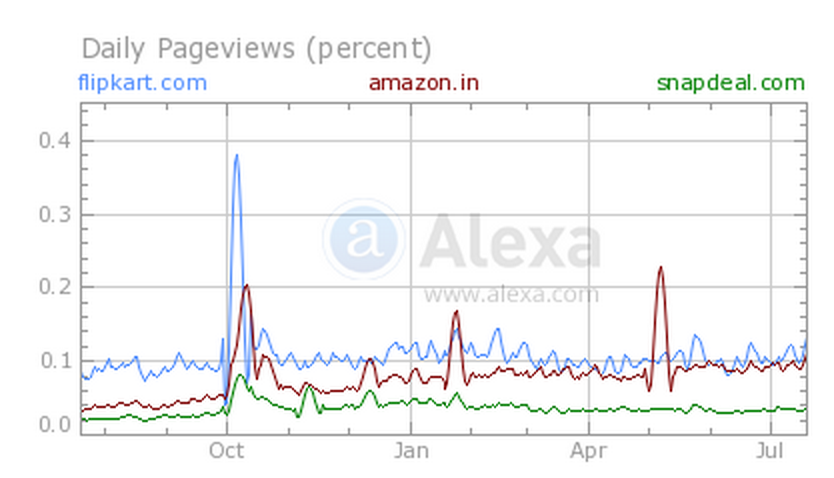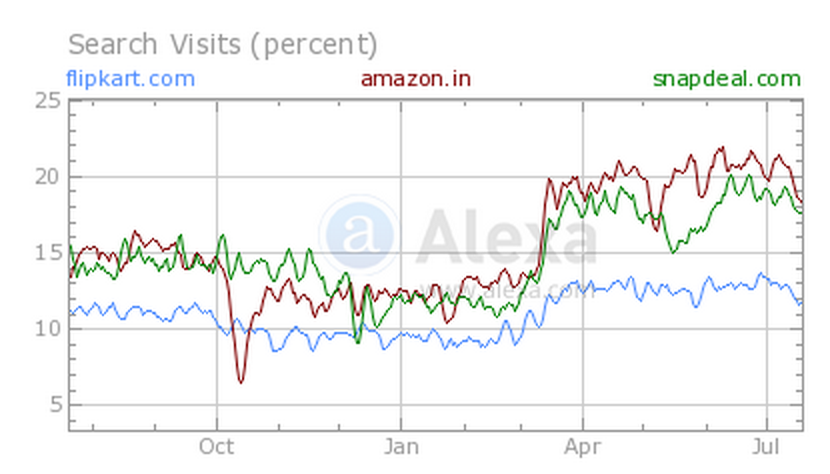Flipkart, Amazon, and Snapdeal are currently locked in a slugfest for a piece of the $11 billion Indian e-commerce pie. They’re offering jaw-dropping discounts, spending millions on promotions, and even taking out snarky advertisements against their competitors, all in a bid to woo the Indian consumer. But last month, Flipkart hinted that it might do something quite extreme – the company said that it could shut down its website.
Flipkart’s decision to go app-only sent ripples across India’s ecommerce scene. The move was panned heavily on reddit, where many users claimed that they’d stop using the service if the desktop version was taken away. Twitter was outraged as well, and a user dryly predicted that this move would mean celebrations at Amazon’s offices. Amazon and Snapdeal swept in on the moment, saying that they had no plans to follow suit.
But there’s probably a reason why Flipkart’s chosen to go the app-only way: search traffic.
In October 2014, Flipkart was way ahead of Amazon and Snapdeal in terms of pageviews on its site. It had thrice the number of pageviews as Amazon, and four times the number of pageviews as Snapdeal. Since then, Amazon has been steadily climbing in its reach, and is currently snapping at Flipkart’s heels in terms of pageviews.

But crucially, Flipkart gets very few of its visitors through search – fewer than even Snapdeal.

This graph is quite telling. When people search on the web for items to buy, they invariably choose Amazon or Snapdeal over Flipkart.
This graph wouldn’t have pleased Flipkart’s executives. Given a choice, Indian customers are choosing to visit their competitors over their site. So Flipkart decided to take search out of the e-commerce equation entirely.
By forcing anyone who wants to shop at Flipkart to have the app on their mobile phones, the company bypasses Google when people want to buy stuff. A captive user who has the Flipkart app installed will much more likely search for the products on Flipkart, instead of browsing around on the web. Having a dedicated app also makes comparison among different retailers hard – while it’s straightforward on a computer to open new tabs with Amazon and Snapdeal to compare prices, it becomes a lot more cumbersome on the app.
This is a bold gambit from India’s largest e-commerce company. While Flipkart says that around 70% of the traffic to its site is already via mobile, the reaction on the internet shows that there is still a large, vocal community of users who are sore about having their choice to buy stuff on the internet taken away. But given Flipkart’s size and its dominant position in the market, it knows it can bully users into doing what it wants, and in turn, make search irrelevant.
